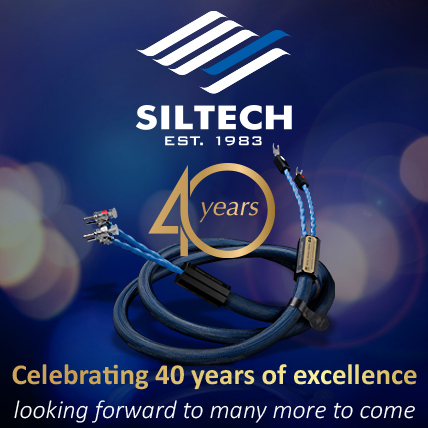|
LAN SWITCH XACT
Manufacturer: JCAT |

|
Review
text WOJCIECH PACUŁA |

|
No 257 October 1, 2025 |
|
˻ PREMIERE ˼ ⌈ XACT is MARCIN OSTAPOWICZ's latest brand, joining his existing JPLAY and JCAT brands. Established in October 2022, it initially offered only one product – the S1 file transport. Last year, USB and LAN cables and anti-vibration feet were added, and at the end of 2024, the S1 Evo transport. We are premiering the N1 LAN switch. ⌋ I'M SURE YOU'VE READ ABOUT IT SOMEWHERE, whether in High Fidelity or elsewhere, but I'd like to re-peat the basic information about the product we're testing this time. LAN switches, also known as “frame switches” in computer systems, are commonly used in Ethernet networks. These are specialized products that al-low devices that transfer data over a LAN (local area network, a computer network connecting com-puters in a specific area) to work together. A four-port switch is usually built into routers used in homes and small businesses, but it can also be a separate network component. 
Initially, they were treated very “technically,” i.e., as a product necessary for the system to function, but also one that did not contribute anything of its own. However, when the performance of the file players themselves was improved and USB and LAN cables were examined, it turned out that the bottleneck remained precisely there, in the inconspicuous LAN switch; test → HERE. This was the impetus that led to the rapid emergence of specialized products of this type in the offerings of many audio companies. As I wrote in my review of the Silent Angel Bonn NX switch, a well-made device should theoretically have no ef-fect on the sound. It supports bidirectional transmission, which is resistant to jitter distortion, and handles files rather than audio signals, so it is inherently error-resistant. Practice has shown the opposite: the sound quali-ty of the entire system largely depends on the quality of the switch, the precision of its word clock, and even the class of RJ45 sockets. ▌ N1 N1 IS THE FIRST specialized LAN switch in the XACT brand's lineup. However, it is not the first one ever. I don't know if you remember, but the company's S1 file transport was equipped with several Ethernet ports and, after changing the software stored on the FLASH card, could work as a LAN switch. However, as Marcin Ostapowicz, the brand owner, says, this made it difficult for potential customers to understand the con-figuration of the entire system. In addition, the S1 was simply too expensive as a switch, and users did not take advantage of most of its capabilities. This is how the specialized N1 switch was born. ▲ A few simple words… MARCIN OSTAPOWICZ 
WOJCIECH PACUŁA • Marcin, tell me why do you write the names of your companies in capital letters, as if they were acronyms? MARCIN OSTAPOWICZ • The name JCAT is an abbreviation – from Jplay Computer Audio Transport. And so it remained. I wanted to keep all the names consistent so that they would be associated with one company. WP • So what's the deal with N1? – The S1 was supposed to operate as a LAN switch, wasn’t it? MO • That's right, both the S1 and S1 Evo can still be used in this way. As it turned out, almost no one used them this way because they were too expensive for this role. That's why the idea arose to design a dedicated LAN switch that would be cheaper because it was specialized for this one purpose only. In the next version, the server will no longer have this functionality. It was confusing and people didn't really know what it was for, what its function was. WP • So it is better to offer specialized devices? MO • Yes, it seems to be a better idea. Although the hardware can do this, from a logistical and functional point of view, it is better to separate these functions. 
WP • The N1 is clearly cheaper than the S1 operating as a switch – does that mean it is inferior in some way, lacking in some features? MO • Paradoxically, N1 is better in this role, because we have managed to achieve even lower noise levels. It does not need to have as powerful a processor as the server does, and increased computing power always means higher power consumption and higher noise levels. The new switch runs much lighter software that supports the operation of the system, and thus generates lower noise. In addition, the N1 switch features a single isolated socket. It is operated by a special chip. All data, ground, and power are galvanically isolated in it. This section also utilizes a separate power supply. The best re-sults are achieved by connecting a player or file transport to it. WP • N1 also features an optical connector – is it the first one in your companies’ history? MO • Yes, this is the first such input in my hardware devices. It is useful if we want to isolate the audio system from the home network, and it is a very effective isolation. When transmitting “via cable”, various problems may or may not occur. So we connect the external network via “optical fiber”, isolating the whole sys-tem, and connect the player/file transport to the isolated Ethernet output. In our opinion, this arrangement gives the best results. WP • We are talking about details, but I would like to ask about something very general—does replacing a regular LAN switch with a specialized one really bring about such changes that it is worth doing? MO • In my opinion, this results in a huge improvement in sound quality. It's all about minimizing noise. This is done by reducing the load on the processor, updating the software to disable all unnecessary features, and improving the power supply. That's why the N1 only uses linear power supplies. The clock that controls eve-rything is also important, preferably with its own power supply. 
WP • I see that there is also the option of connecting artificial ground—was that your idea, or customer feedback? MO • Both – I use artificial ground myself, because it provides an additional level of noise reduction for any noise that remains. WP • However, there is no input for an external clock – why? Many high-end companies clock the LAN switch with a reference clock. MO • There is no such input because in N1, it is well powered and, in addition, clocked at a different frequency than the popular 10 MHz. So we decided that it was not necessary, especially since such an input complicates the circuit, and we wanted the processor’s load to be as light as possible. ● I ASKED MARCIN about the names of his brands, because we are talking about three different ventures: Jplay, JCAT, and Xact (the company stylizes all names by writing them in capital letters; as we already know, only the name JCAT is an abbreviation). The latter is the latest addition to the offer. It was launched with the S1 file transport system, which we tested in November 2022. And that is what this brand does – hardware prod-ucts, i.e., “flesh and blood ones.” 
The N1 fits into this logic, becoming an intermediary between the transport (player) and the Ethernet network. It is medium-sized, measuring 241 x 97 x 270 mm (W x H x D) and weighing 5 kg. Its front panel has been designed to match the style of the company's transports. It is simply an aluminum plate with a recessed center. This is where the orange LED indicating power on status is located. There is no switch here, as in the transport, because the device should be powered at all times. FEATURES • N1 is a switch with six ports. Five of them are classic RJ45 1G/100M ports, and the sixth is an SFP optical port. There is also a port on the rear panel for connecting an external artificial ground. Young manufacturers are often surprised that I point out the lack of such a connector in the description of their products, arguing that the device is grounded through the power socket. However, practice shows that this is not the same thing and that connecting an artificial ground significantly re-duces noise. SFP, Small Form-factor Pluggable, is – let us remind you – a small transmitter/receiver that allows you to ex-pand the functionality of your devices. The signal can be transmitted optically and/or electrically. It is also known as a mini-gigabit (Mini-GBIT) interface converter. It can be connected directly to the physical port of a network device. It can also convert electrical and optical signals to increase the distance between the transmitter and receiver. SFP has been used in audiophile systems for some time now, as it galvanically isolates the system connect-ed to the Ethernet and audio devices, thus eliminating high-frequency interference. One of the first compa-nies to use it on a large scale was the Japanese company Melco. Lumin used it for the first time in the X1 file transport (review → HERE), and Xact chose the N1 for the intro-duction in its lineup. When we look at the rear panel, we can see that one of the RJ45 sockets is clearly separated and la-beled “isolated”. It is designed to connect a transport or file player and is galvanically isolated. It also has a sep-arate power supply. These measures are intended to help reduce noise. The manufacturer points out that the in-put is compatible with 1G and has limited compatibility with 10M. TECHNOLOGY • The manufacturer says on his website:
To achieve this, the manufacturer has implemented several solutions designed to minimize noise – the bane of digital systems. The first has already been mentioned – the motherboard has been designed specifically for this device and with high-end systems in mind. The second is also already familiar to you – it is an SFP opti-cal port, which should be used to connect the switch to the rest of the Ethernet network in your home, and on the other side, an isolated RJ45 socket for transport/player. The rest are hidden inside the case. 
The custom motherboard in the N1 is built with ultra-low-noise linear LDOs dedicated to each critical circuit. This design ensures that each component receives the cleanest possible power supply—but equally important, it prevents noise generated by one part of the system from contaminating the rest of the board. The power supply uses a 100% linear power supply based on a large toroidal transformer, audiophile electrolytic capacitors, and ultra-low-noise voltage regulator chips. The effect of these measures? As it reads:
The power supply is a derivative of the Optimo power supply. It consists of three separate, galvanical-ly isolated voltage rails that individually power the main switch circuit, the system clock, and the isolated output, ensuring, as the manufacturer claims, “uncompromising signal integrity”. The clock is a large, nice-looking OCXO circuit. |
An Oven Controlled Crystal Oscillator is a type of crystal oscillator in which the quartz crystal and electronic circuits are maintained at a constant high temperature by a temperature-controlled heating element. This design provides significantly higher frequency stability compared to other types of crystal oscillators. To ensure that the main processor responsible for connecting individual inputs does not affect the transmitted files, it turns off automatically 15 seconds after startup to “minimize electrical interference.” When the processor is turned off, all configuration functions, including isolated port speed negotiation, are disabled to “op-timize audio quality.” 
According to the manufacturer, every component in the N1 has been hand-selected or developed from scratch and thoroughly tested. The website also states that the input sockets and power transformer meet military specs. ▌ SOUND HOW WE LISTENED • The Xact N1 LAN switch was placed on a Finite Ele-mente Pagode Edition Mk II rack, on its upper shelf made of carbon fiber weave. I placed Acoustic Revive RKI-5005 discs under its feet to prevent it from slipping. For data transfer, I used Acoustic Revive LAN Quad-rant Triple-C cables with an RLI-1GB Triple-C filter from the same company (test → HERE). 
A three-box Sforzato PMC-05 EX & DSP-05 EX player was used to play the files. With router the transport was connected via my system consisting of a Silent Angel N16 LPS dual LAN switch, with its two mod-ules in series, powered by a Tiglon TPL-2000A cable and a Tiglon TPL-2000L LAN cable; more on this topic → HERE ˻PL˺; the router was powered by a JCAT Optimo 3 Duo power supply. The Xact N1 was compared to the Silent Angel switch. 
» RECORDINGS USED FOR THE TEST ⸜ a selection
⸜ SEASICK STEVE, Blues in Mono, There's A Dead Skunk Records/Tidal, FLAC 24/44,1 ⸜ 2020. WHEN WE SIT DOWN IN FRONT OF A NEW DEVICE, we never really know what to expect. We have some ideas and expectations, prejudices and preliminary assessments, and our thinking is organized by stereotypes. This is normal. However, all of this is only preliminary preparation, which is often verified in the first few seconds of listening. This was also the case with me and the Xact N1 LAN switch. As it turns out, I subconsciously expected something like a “zoom” into the sound. Not even in space, but rather in emotional temperature. However, the tested device played completely differently. And again, not in the op-posite direction, because it did not weaken the emotional connection with the recordings, but showed something else that I did not expect and did not anticipate. It is a switch that introduces calm and order to the sound. It also offers higher resolution than the Silent Angel, to which it has been compared. And much higher at that. The delicate tapping of a thumb on the guitar body in the ˻ 1 ˺ Well Well Well by SEASICK STEVE was, on the one hand, more delicate with the N1, and on the other, more legible. It was as if the device did not need to show a large body to be noticed. I am anthropomorphizing, but that is how I perceived it. The tested switch seems to smooth out the sound attack. Both Steve and Chet Baker, heard immediately after-wards in ˻ 1 ˺ Let’s Get Lost, as well as LESTER YOUNG in the wonderful 1952 recording ˻ 1 ˺ Ad Lib Blues, played with OSCAR PETERSON's trio, all these recordings were smoother, but not with the smoothness of letting anything go. It was a smoothness resulting from more information, not less. At first, it might have seemed that the sound was less energetic as a result. But only until I compared it again when I returned to the reference switch. It was then clear that it was not about the greater energy of the Silent Angel device, but about a stronger emphasis on the attack, albeit a slightly more nervous, somewhat vibrating attack. And it was precisely this vibration that gave the impression of higher dynamics. Compared to it, the Xact sounded more relaxed, but also more confident. In fact, I got much more dynamics with the Xact. It was dynamics that allowed me to turn up the volume by 1 or even 2 dB and get, subjectively, a similar SPL level, but with much greater contrasts and a stronger entering into the recording. And it wasn't just an impression, it was something I heard with every subsequent track throughout the entire time I was listening to the N1. 
All three of the above-mentioned tracks are monophonic recordings, focused on a kind of fluidity and having an internal compactness and relations that are not found in contemporary multi-mono recordings. Xact played music following this direction, also with this type of recording. TAME IMPALA from their new single ˻ 1 ˺ End Of Summer, with hypnotic rhythms, low bass, distorted vocals, and mechanical hi-hat on the axis, all of which ‘flowed’ better with the N1, was more „cohesive”. I found it also interesting that the tested switch does not suppress the lowest bass in the same way as Silent An-gel does. I had already heard something like this when I compared the Siltech Triple Crown AC power cable with its higher-end version, the Master Crown. The latter also played in a smoother and more balanced way, but above all, it presented recordings from a slightly different perspective. Triple Crown brings it slightly closer to the listener. It felt similar here – Xact somehow frees the music from the “compulsion” to play “here and now” and allows the recordings to sound more effortlessly. I also felt that by calming the sound, not by muffling it, but by reducing its vibration, the tested LAN switch better differentiates events on the virtual sound stage. ERIC CLAPTON in the ˻ 1 ˺ Cocaine sounded, on the one hand, motoric, dreamlike, powerful, halluci-nogenic – all at once. The version available on Tidal has very low compression, so it needs to be played quite loudly. This brings out the excellent rhythm of the song, the motoric mid-range bass, and the nice cymbals. N1 added Clapton's clear vocals, which were slightly hidden in the mix by the producers. It wasn't about bringing them to the forefront, but rather showing more information about how they sound, how they relate to the guitars, drums, and bass. The tested device did this with more grace than the Silent Angel, with panache and elegance. I remember having a similar impression of the Silent Angel Bonn NX switch. Because that's what you get when you replace a good switch with a very good one – smoothness, resolution, greater differentiation. The N1 is not too smooth, while the Bonn NX sometimes gives that impression. If there is a more hoarse element in the recording, such as Sting's vocals in the ˻ 1 ˺ Murder by Num-bers, from The Police’s repertoire, played by me from the excellent version by CHRISTIAN McBRIDE, then that is how it will be presented. As usual, Sting's vocals are not very deep in tone, but here they had a lot of air around them, so they sounded very pro. The N1 played this track with more panache, with vigor, but a noble, differentiating vigor, rather than flattening everything into a loud “GRRRRR!” ▌ Summary THIS HAPPENS EVERY TIME I listen to recordings with better digital components, especially in the case of files: lower noise levels result in a smoother sound, but also one with greater resolution and differentiation. Smoothness is an impression caused by the absence of nervousness, which we previously took for excitement. It is excitement, as it turns out, but nervous excitement. With the N1, the music sounds as if all the energy has remained in the music, but it is better communicated. It is also important to note that once you get used to the sound of a system of this class, it will be difficult to go back to the sound you had before. When you play something like ˻ 1 ˺ You And The Night And The Music from the BILL EVANS album with dense sound, warm but expressive guitar, and powerful double bass, you will hear it in its entirety, in a single event. And even if it's not quite Sting's full vocals, or if there's noticeable distortion, added low-frequency rumbling in Evans' recording ˻ 1 ˺ Re: Person I Know from his other album, Moon Beams, it will be the truth presented in such a way that it will distract you less. Even basic LAN switches designed for audio follow the same direction. But only devices of this class, such as the Xact N1, deliver on this promise in a way that allows us to sit back and, after an initial moment of confu-sion, realize that we have something truly special in our hands. ▌ DESIGN IT IS A MEDIUM-SIZED, or a “midi” product. The entire housing is made of aluminum, with the chas-sis being a piece of a thick bent sheet metal and the front is milled from a piece of aluminum. The feet are also aluminum, with felt pads attached. The electronics are placed on two PCBs – one with the power supply and one with the actual circuit. The power supply is exceptionally complex and could easily serve as the basis for a medium-sized amplifier. The trans-former comes from a Polish company called Toroidy.pl, which is a great choice, because it is worth us-ing high-quality products manufactured as close as possible to the headquarters of the audio manufacturer. The transformer is shielded and, as far as I can tell, filled with vibration-damping resin. Vibrations are further damp-ened by lossy insulators on which the metal board with the transformer rests. Three secondary windings come out of the transformer, so there are three independent power rails: for DSP circuits, word clock, and inputs. The stabilizers are integrated, and the diodes in the bridge are decoupled with capacitors, minimizing noise generated during diode switching. Ripple suppression is handled by nice Nichi-con capacitors from the Audio KA(M) series, with aluminum electrodes. On the main board, there is a DSP chip where the inputs are configured and a second chip with a heat sink that handles data flow. These two chips are powered by a 2.5 A (!) power supply. Next to them, we see a large, beau-tiful OCXO clock, also with its own power supply. And finally, there are input modules, with a separate, isolated track for the input marked as “isolated.” The ground connection does not come from the housing, alt-hough that would be easier, but from the chip's ground. Let's add that the Ethernet sockets are very good com-ponents from Amphenol, and the IEC power socket is a product from Furutech, i.e., with its fuse and rhodium-plated copper contacts. 
Nice? – Very... As usual, however, there is room for improvement, and in the future, the manufacturer may de-cide to offer an upgrade package: CL or CRX feet from this manufacturer (test → HERE) and a set of cables connecting the power supply to the circuits and the circuit to the ground output. For example, cables by Soyaton, to stick with Polish manufacturers. The cables are plugged in, so such a set can be easily replaced. I assume that the cables used by the manufacturer fulfill their role, but there is always room for improvement. And that's what excites us the most, right? ● ▌ Technical specifications (according to the manufacturer)
Ports: 4 x 1 G/100 M RJ45 (auto-negotiating) + 1 x SFP 1G + 1 x 1G RJ 45 (limited compatibility with 100 M), isolated 
THIS TEST HAS BEEN DESIGNED ACCORDING TO THE GUIDELINES adopted by the Association of International Audiophile Publications, an international audio press association concerned with ethical and professional standards in our industry, of which HIGH FIDELITY is a founding member. More about the association and its constituent titles → HERE. |

|
Reference system 2025 |
|
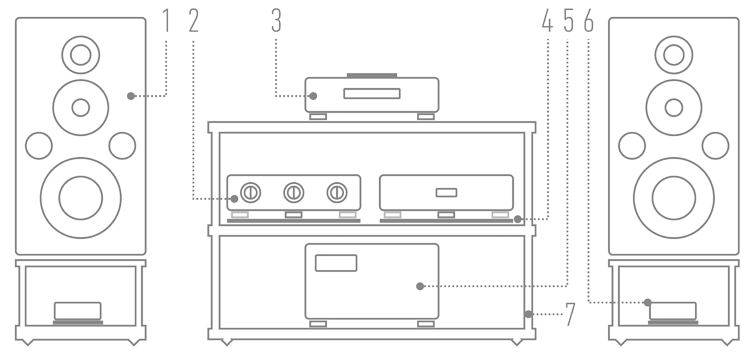 1) Loudspeakers: HARBETH M40.1 |REVIEW| 2) Line preamplifier: AYON AUDIO Spheris III Linestage |REVIEW| 3) Super Audio CD Player: AYON AUDIO CD-35 HF Edition No. 01/50 |REVIEW| 4) Stands (loudspeakers): ACOUSTIC REVIVE (custom) |ABOUT| 5) Power amplifier: SOULUTION 710 6) Loudspeaker filter: SPEC REAL-SOUND PROCESSOR RSP-AZ9EX (prototype) |REVIEW| 7) Hi-Fi rack: Hi-Fi rack: finite elemente MASTER REFERENCE PAGODE EDITION Mk II, more → HERE |
|
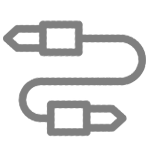
|
Cables Analog interconnect SACD Player - Line preamplifier: SILTECH Triple Crown (1 m) |ABOUT|» ANALOG INTERCONNECT Line preamplifier → Power amplifier: Siltech ROYAL SINLGE CROWN RCA; review → HERE Speaker cable: SILTECH Triple Crown (2.5 m) |ABOUT| |
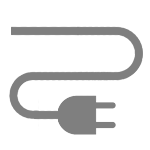
|
AC Power Power cable | Mains Power Distribution Block - SACD Player: SILTECH Triple CrownPower (2 m) |ARTICLE| » POWER CABLE Mains Power Distribution Block → Line preamplifier: Acoustic Revive ABSOLUTE-POWER CORD, review → HERE » POWER CABLE Mains Power Distribution Block → Power amplifier: Acoustic Revive ABSOLUTE-POWER CORD, review → HERE Power cable | Power Receptacle - Mains Power Distribution Block: ACROLINK Mexcel 7N-PC9500 (2 m) |ARTICLE| Power Receptacle: Acoustic Revive RTP-4eu ULTIMATE |REVIEW| » ANTI-VIBRATION PLATFORM under Acoustic Revive RTP-4eu ULTIMATE: Graphite Audio CLASSIC 100 ULTRA, review → HERE Power Supply Conditioner: Acoustic Revive RPC-1 |REVIEW| Power Supply Conditioner: Acoustic Revive RAS-14 Triple-C |REVIEW| Passive filter EMI/RFI: VERICTUM Block |REVIEW| |

|
Anti-vibration Speaker stands: ACOUSTIC REVIVE (custom)Hi-Fi rack: finite elemente MASTER REFERENCE PAGODE EDITION Mk II, more → HERE Anti-vibration platforms: ACOUSTIC REVIVE RAF-48H |ARTICLE| » ANTI-VIBRATIONAL FEET: |
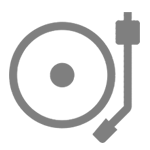
|
Analogue Phono preamplifier: Phono cartridges:
Clamp: PATHE WINGS Titanium PW-Ti 770 | Limited Edition Record mats:
|

|
Headphones » HEADPHONE AMPLIFIER: Leben CS-600X, review → HEREHeadphones: Headphone Cables: Forza AudioWorks NOIR HYBRID HPC |
main page | archive | contact | kts
© 2009 HighFidelity, design by PikselStudio,
projektowanie stron www: Indecity
